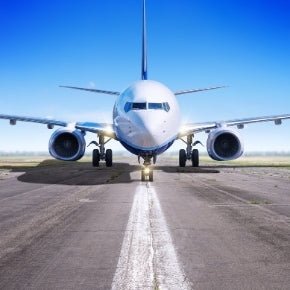In the 1931 cinema classic "Blonde Crazy", Jimmy Cagney utters the now infamous line, "Mmm, that dirty, double-crossin' rat..." While the line has been butchered for decades, our team heard it loud and clear from Brian Balukin at the Allen Groupe.

Recently Brian contacted CO2Meter, Inc. with an interesting question: “Can I fumigate an aircraft using CO2?” Brian’s team has a client who owned an expensive private aircraft that was being stored in the Caribbean. The client knew he had a rodent issue, and was looking for the best and most cost effective means of fumigating the aircraft without damaging any of the flight controls in the process. While we have received plenty of calls and emails about fumigation for rodents, bed bugs, roaches, and even prairie dogs over the years this was the first time someone has asked about trying to fumigate an aircraft. And while this sounds relatively straightforward there is actually some science involved.
The simple part of this exercise was Brian and his team purchasing a CO2Meter CO2 Sampling Data Logger to measure the gas concentrations inside the aircraft during the exercise. The next step is to run the hoses, power the device, open the valves on the CO2 tanks, seal the aircraft up, and wait 20-30 minutes.
The difficult part of the exercise was helping Brian determine how much gas he needed to use to adequately fumigate the aircraft. Ray, our CTO and resident scientist, as well as avid aviator, performed multiple calculations to determine how much gas would be needed to appropriately fill it. Brian’s team provided the aircraft's model and dimensions which allowed Ray to make hyper accurate calculations about the space. The other issue that Ray brought to Brian’s attention was the need to ventilate during the test so as not to over-pressurize the cabin. If venting didn’t occur you could very easily bring the aircraft to altitude without ever leaving the ground.

“Dealing with the professional and knowledgeable staff at CO2Meter helped to make this job a success", said Brian. "They helped me choose the correct data logging meter and calculate the correct saturation of gas for the volume of the aircraft.”
And while I know the calculations were time consuming it is also clear by the pictures Brian sent that the most difficult part about this job was the cleanup!
Here was the calculation:
First, we had to determine an appropriate level of CO2 concentration. In Ray's experience working with CA in grain silos, he decided that a continuous CO2 level of 60% over 10 days would be sufficient to fumigate the aircraft.
The next question was, how much carbon dioxide would be required?
After some research on Google, he determined that the aircraft’s cabin capacity was approximately 1,900 cubic feet. We assumed the gentleman would purchase K-size cylinders of CO2, the type you see in welding shops. Each pressurized cylinder is 9.5x60 inches, or about 64 lbs. of CO2.
1 pound of CO2 is 8.75 cubic feet of 100% CO2 at STP, or 560 cubic feet per cylinder.
Since 60% concentration was required, Ray multiplied the aircraft’s interior volume of 1,900 cu ft x 0.60. That means we would need 1,140 cubic feet of CO2.
1,140 divided by 560 cubic feet per cylinder is 2.035. So the client will need a bit better than 2 cylinders to fill the aircraft to a 60 % concentration.
Many thanks to Brian Balukin and the Allen Groupe for their business and for educating us on another new application.







